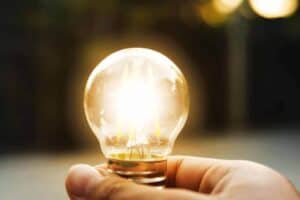It's been a month since Eskom suspended load shedding.
Load shedding may be on pause, but your electricity bill isn’t, making it a perfect time to install and optimise a solar system for maximum savings.
South Africans have not experienced load shedding for a month after Eskom’s decision to suspend it indefinitely.
If human nature prevails, many households will find themselves with hefty electricity bills this month due to heavily relying on the grid and unexpected cold snaps across the country.
Most households that have made the switch to solar to mitigate the impact of load shedding have seen significant savings on their monthly bills – so why stop now when you can bring down your electricity bill even more?
READ MORE: Eskom’s new tariff: Here’s how your monthly electricity bill will change
Good time to maximise on savings
LookSee executive head Marc du Plessis noted that most solar systems installed in the past two years have had their inverters set to provide maximum relief during load shedding and power outages.
“Solar systems have predominantly been set to keep the batteries as full as possible in preparation for the next round of load shedding. This has often meant that the batteries were charged with grid power. So you’ve been saving that energy for a rainy day, but now the rainy day is not there.”
Using your battery storage to provide for some of your nighttime electricity needs when load shedding is at low levels or suspended, can maximise your savings and help you to pay off your your solar finance faster du Plessis explained.
Click here to get a Solar Loan with low interest rates
While it’s uncertain how long Eskom’s planned power cuts will be suspended for, it’s important to stay alert so you don’t get caught off-guard.
“Look at the way your solar system is set up and see if you can tweak your inverter settings. Ideally, you want to allocate some of your battery storage for your nighttime needs and set your batteries to only charge with solar power. You’ll need to keep an eye on load shedding alerts, however, so you can switch back your settings if higher levels of load shedding are introduced.”
“Using that battery at night means that you’re not using Eskom electricity during that period, and that improves your savings considerably as well,” he added.
READ MORE: Is getting solar really worth it? Here’s how much you could save
Behavioural change is key
Having a solar system installed is one thing, but making the most of it is another.
The latter requires active behavioural change to maximise the benefits of renewable energy.
Du Plessis said timing was everything when it comes to making the most of your hybrid system.
He advised using heavy-load appliances like washing machines, dishwashers, tumble-dryers, pool pumps and the like during day time when the sun can provide the necessary power, and saving your battery power for mornings and evenings.
“All your heavy load work must happen when the sun is up,” said du Plessis.
ALSO READ: I’m planning to go solar, how do I make sure my installer isn’t dodgy?
Monitor and submit your metre readings
Meanwhile, monitoring your home’s electricity consumption is also key to keeping track of your savings.
“For post-paid customers, the recommendation is to religiously submit your actual meter readings.”
Du Plessis warned that most utility providers often use estimates to bill on monthly usage, further encouraging homeowners to track their own readings.
“Your billing won’t be as accurate, and therefore you might get billed a larger amount than what your actual usage is.”
Post-paid users can consult their municipal or utility website for details on where and when to submit these readings.
Meanwhile, households on prepaid electricity don’t have to go through the hassle.
“Prepaid metres make it slightly easier because you know exactly how much money you’ve spent, and how many units you’ve purchased in that particular month.”
“Those units should deplete at a much slower rate because you’re using your own solar energy and batteries.”
ALSO READ: Converting your electric geyser to solar could save you thousands
Return on investment
If you’ve taken out a loan to finance your solar system, then you can use the savings towards monthly repayment.
“If you optimise your solar power usage now, using more of your battery power at night instead of relying on the grid – your savings will increase markedly.”
“That means you can pay off your solar system quickly, and get your return on investment faster,” du Plessis concluded.
Click here to get an instant Solar quote and free consultation







